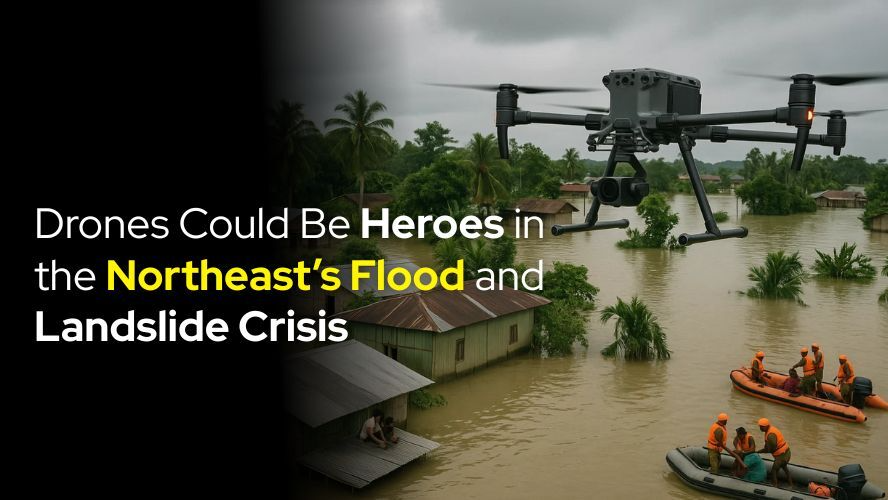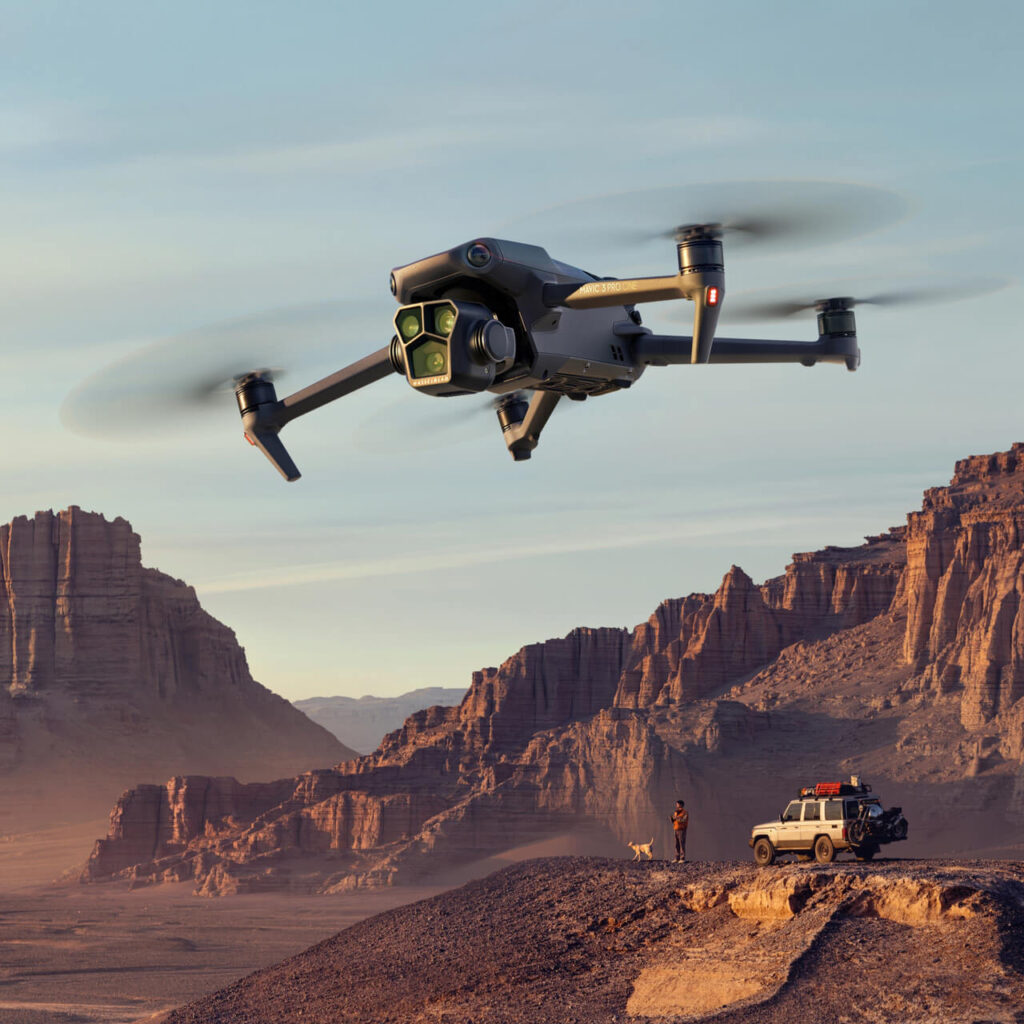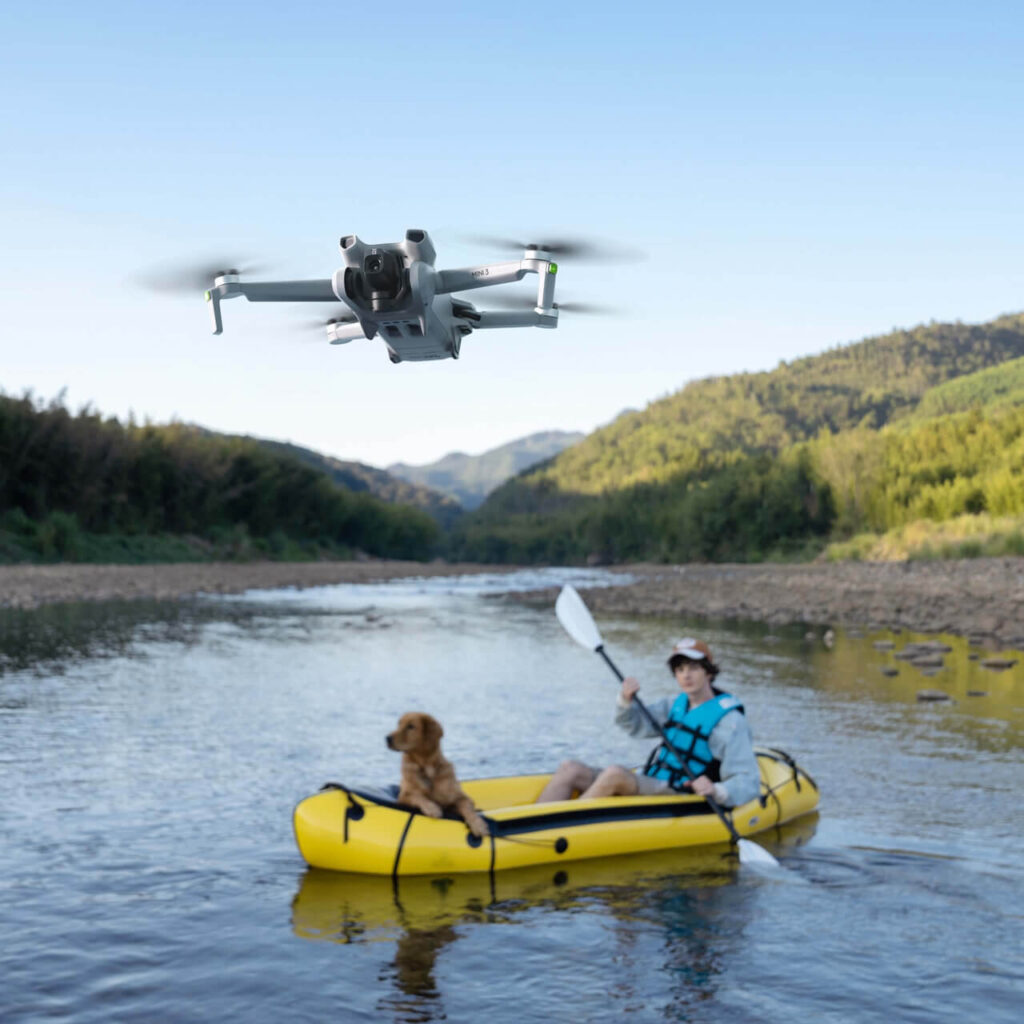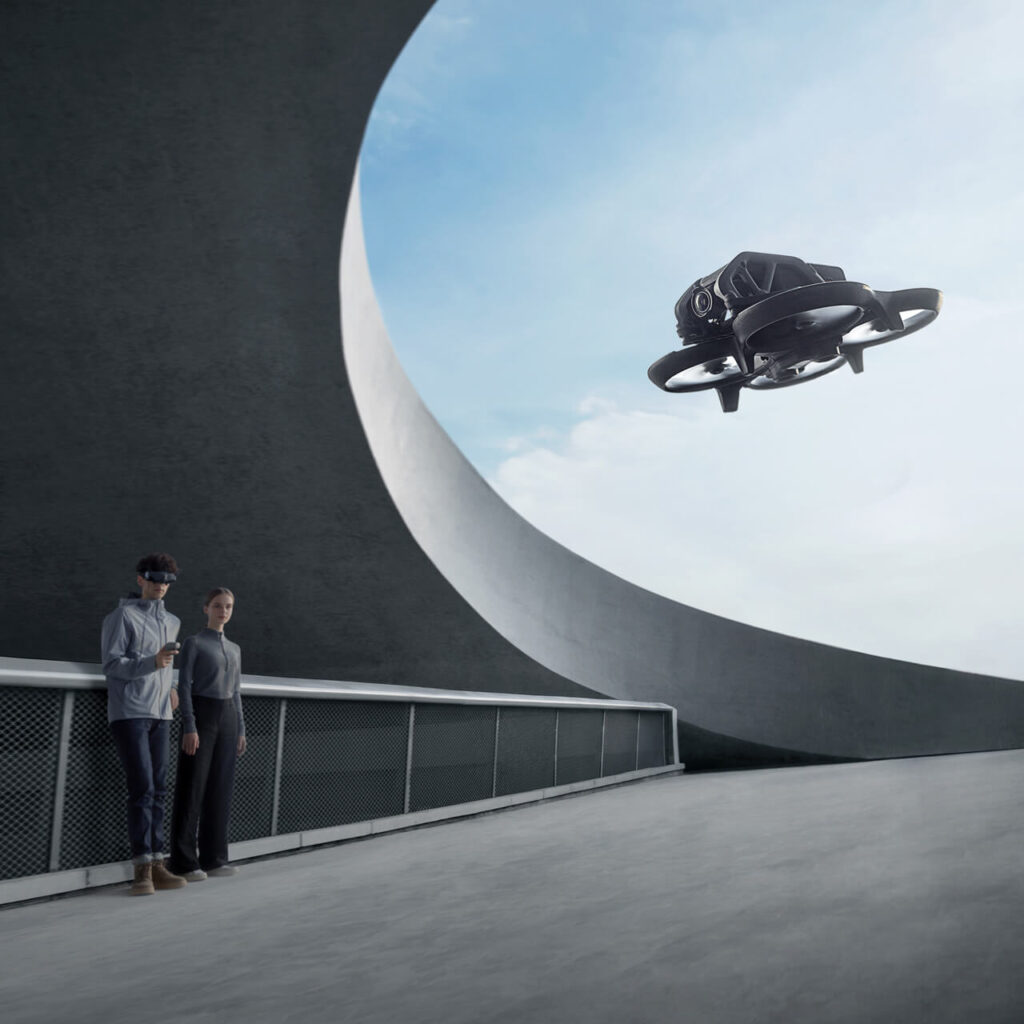Have You Seen What’s Happening in the Northeast?
The monsoon season has unleashed its fury across India’s northeastern states, leaving behind a trail of devastation that breaks hearts and challenges every conventional rescue method we know. Assam, Arunachal Pradesh, Sikkim, and Meghalaya have been battling relentless floods and catastrophic landslides that have claimed hundreds of lives and displaced millions.
In Assam alone, over 2.4 million people have been affected by floods, with entire villages submerged under muddy waters. The numbers are staggering, but behind every statistic is a human story—a family stranded on their rooftop, a pregnant woman unable to reach the hospital, children separated from their parents, elderly people running out of life-saving medications.
What makes this crisis particularly heartbreaking is the geographical challenge. The Northeast’s mountainous terrain, narrow valley roads, and dense forests become virtually impassable during such disasters. Traditional rescue vehicles can’t navigate through washed-out bridges, helicopters can’t land in many remote areas due to weather conditions, and relief teams often take days to reach the most affected communities. Time, in these situations, literally means the difference between life and death.
Now Imagine a Drone Flying in with Help
Picture this: You’re trapped in a remote village in the hills of Arunachal Pradesh. The bridge connecting your village to the main road collapsed three days ago. Your grandmother is diabetic and desperately needs insulin. The nearest hospital is 50 kilometers away, and there’s no way to reach it on foot through the muddy, treacherous terrain.
Suddenly, you hear a familiar buzzing sound above. It’s not a helicopter—it’s much smaller, more agile. A drone descends carefully into your village courtyard, carrying a medical kit with insulin, water purification tablets, and emergency food supplies. Within minutes, what seemed impossible becomes reality.
This isn’t science fiction. This is the power of drone technology being deployed in disaster relief operations around the world. These unmanned aerial vehicles can navigate through the most challenging terrains, operate in weather conditions that would ground traditional aircraft, and deliver critical supplies to areas that are completely cut off from the outside world.
Just as Drones Are the New Stealth Force Behind 2025’s Biggest Events for surveillance and security, they’re becoming the invisible heroes in disaster management. Companies like Jetayu Gadgets are already bridging this gap, offering drone solutions from leading manufacturers like DJI, Autel, and Parrot that are specifically designed for emergency response scenarios.
So, What Exactly Can Drones Do in a Crisis Like This?
The capabilities of modern drones in disaster situations are nothing short of remarkable. Here’s what these flying lifesavers can accomplish:
Immediate Relief Operations
- 🚁 Medical Supply Delivery: Insulin, antibiotics, blood bags, vaccines, and emergency medications
- 🍎 Food & Water Distribution: Baby food, energy bars, water purification tablets, and ready-to-eat meals
- 📡 Communication Restoration: Temporary cell towers and Wi-Fi hotspots to reconnect isolated communities
- 🔦 Emergency Equipment: Flashlights, radios, first aid kits, and survival gear
Search and Rescue Operations
- 🔍 Survivor Detection: Thermal imaging cameras to locate people trapped under debris
- 🗺️ Damage Assessment: High-resolution mapping of affected areas for rescue planning
- 📍 Location Tracking: GPS coordinates of survivors for rescue team deployment
- 🚨 Emergency Alerts: Broadcasting evacuation instructions and safety information
Strategic Planning Support
- 🌊 Flood Monitoring: Real-time water level tracking and flood path prediction
- 🏔️ Landslide Risk Assessment: Identifying unstable slopes and potential danger zones
- 🛣️ Route Planning: Finding safe passage routes for rescue teams and supplies
- 📊 Data Collection: Meteorological data and environmental monitoring
| Drone Model | Key Features | Best Use Case |
|---|---|---|
| DJI Matrice 30T | Thermal imaging, 41-minute flight time | Search and rescue operations |
| Autel EVO Max 4T | Rugged design, obstacle avoidance | Medical supply delivery in challenging terrain |
| Parrot ANAFI USA | Secure data transmission, zoom camera | Damage assessment and mapping |
Are Drones Already Doing This Anywhere?
The answer is a resounding yes. Across the globe, drones have already proven their worth in disaster response, saving thousands of lives and revolutionizing how we approach emergency situations.
Rwanda’s Medical Drone Network stands as one of the most successful implementations. The country partnered with Zipline to create a drone delivery system that transports blood, vaccines, and medical supplies to remote health centers. Since 2016, they’ve completed over 100,000 deliveries, reducing medical supply delivery time from hours to minutes.
India’s Growing Drone Success Stories are equally impressive. In Telangana, drones have been successfully used to deliver medicines to remote tribal areas, cutting delivery time from days to hours. The Indian government’s drone policy reforms have paved the way for expanded emergency response applications.
International Disaster Response has embraced drones extensively. During Turkey’s devastating 2023 earthquake, drones were instrumental in locating survivors trapped under rubble. Australia deploys drones for wildfire monitoring and evacuation planning. In the Philippines, drones have become standard equipment for typhoon response, delivering supplies to islands cut off by storms.
The technology isn’t experimental anymore—it’s proven, reliable, and ready for deployment. Just as Can Drones Solve India’s Labour Crisis in Agriculture? is becoming a reality with precision farming and crop monitoring, disaster response drones are transforming emergency management worldwide.
Could We Do This in the Northeast—Right Now?
The short answer is yes, and here’s exactly how we can make it happen:
Infrastructure Requirements
The Northeast already has several advantages for drone deployment. The region’s airports and helipads can serve as drone operation centers. Companies like Jetayu Gadgets have established networks across India, providing access to professional-grade drones from DJI, Autel, and Parrot that are specifically designed for emergency response.
Regulatory Framework
India’s drone regulations have evolved significantly, with the Drone Rules 2021 providing clear guidelines for emergency operations. The Directorate General of Civil Aviation (DGCA) has provisions for rapid deployment of drones during disasters, including temporary airspace clearances and emergency operation permissions.
Technical Capabilities
Modern drones can handle the Northeast’s challenging conditions:
- Weather Resistance: Advanced models operate in heavy rain and strong winds
- Extended Range: Some drones can fly up to 15 kilometers from their base station
- Payload Capacity: Capable of carrying 2-5 kg of supplies per flight
- Battery Life: Up to 45 minutes of flight time with quick-swap battery systems
Partnership Model
The most effective approach involves collaboration between:
- Government Agencies: NDRF, State Disaster Management Authorities
- Private Companies: Jetayu Gadgets and other drone service providers
- NGOs: Local relief organizations with ground knowledge
- Community Groups: Trained local operators for immediate response
Implementation Timeline
- Phase 1 (Immediate): Deploy existing drones for current flood relief
- Phase 2 (3-6 months): Establish permanent drone stations in high-risk areas
- Phase 3 (1 year): Create a comprehensive drone-based disaster response network
It’s Not About Drones. It’s About Lives.
When we strip away the technology talk, the specifications, and the impressive capabilities, we’re left with something profoundly simple: human lives hanging in the balance. Every minute that passes without medical supplies reaching a diabetic patient, every hour that rescue teams can’t locate survivors, every day that communities remain cut off from help—these aren’t just statistics or operational challenges. They’re real people with families, dreams, and the fundamental right to survival.
The floods and landslides in the Northeast have reminded us that nature’s fury doesn’t discriminate. It affects the wealthy and the poor, the young and the old, the connected and the isolated. But our response to these disasters can discriminate—it can choose to be innovative, swift, and effective, or it can remain trapped in traditional approaches that leave people waiting for help that arrives too late.
Technology becomes meaningful only when it touches real lives. A drone isn’t just a flying machine; it’s a lifeline for the stranded grandmother who needs her heart medication. It’s hope for the rescue team searching for survivors. It’s the difference between a community that rebuilds and one that remains forgotten.
The question isn’t whether we can deploy drones for disaster relief in the Northeast—we absolutely can. The question is whether we have the will to act, the commitment to invest in these life-saving technologies, and the courage to embrace innovation when lives depend on it.
The time for action is now. Every day we delay is another day that communities remain vulnerable to the next disaster. Every postponed decision is a missed opportunity to save lives.
Your Role in This Mission
For Government Officials: Champion drone technology in disaster management policies. Allocate budgets for drone procurement and training programs.
For Businesses: Partner with drone service providers like Jetayu Gadgets to sponsor emergency response units. Invest in local drone capabilities.
For Citizens: Support initiatives that bring drone technology to disaster-prone areas. Raise awareness about the life-saving potential of drones.
For NGOs and Relief Organizations: Integrate drone capabilities into your disaster response planning. Train your teams on drone-assisted operations.
Want to deploy drones for disaster relief in the Northeast? The technology is ready, the need is urgent, and the impact is life-changing. Let’s talk about making this vision a reality. Contact Jetayu Gadgets today to explore partnership opportunities and bring this life-saving technology to the communities that need it most.
Because when disaster strikes, every second counts—and drones can make those seconds count for saving lives.




